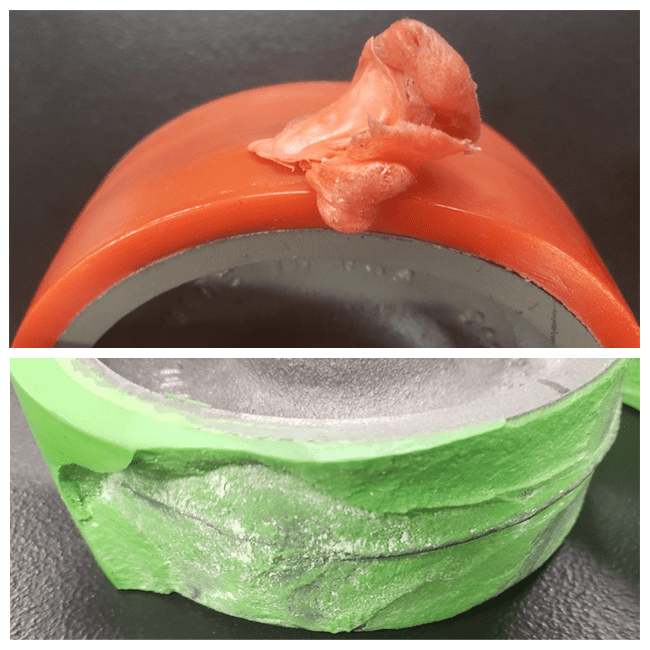

Heavy Duty casters are a specialty here at Caster Concepts. Whether you are looking for 4,000 lbs. of support or 100,000 lbs, we can help. One question that comes up regularly is how do you design the correct caster that will not fail?
While that question may sound fairly simple to you, it’s a very loaded one for me. A “caster failure,” as I understand it, can mean many different things to many people. For this specific blog, I would like to consider a caster failure as anything that creates the cart that the casters are on to fall to the ground. Or, the casters created an issue where the material on the carts is now damaged.
While I suppose there is always a chance that an abusive environment or unintended harm took place to the cart or caster, we will focus on the factors you should consider if you do not want to face a caster failure again.
Speed is one of the most crucial factors in this whole process. If you are looking for a specific drive wheel, it is essential to understand the actual speed at which these will be rolling. Polyurethane wheels are a large part of what we do here at Caster Concepts. These wheels naturally generate heat when they roll, which can cause the poly to break down if this is not appropriately considered.
As a general rule of thumb, Casters and Caster Wheels are not rated for over 5mph without special consideration to the application at hand. You can certainly get wheels or casters rated over this speed range of “walking speeds.” Still, they need to be given additional consideration, which we can calculate using a predictive product failure model for polyurethane and treaded wheels.
See more on that here – Predictive Product Failure Model for Polyurethane Treaded Wheels Based on Load and Speeds – Caster Concepts.
 The Duty Cycle refers to how much the caster will be used during a specific time frame. Sometimes the duty cycle is moving around walking speeds for 8-12 hours per day with minimal downtime to unload a cart or dolly. Other times I hear about an application that runs very fast with a high load on it for 30 minutes to an hour, but then it will sit for 2-3 hours afterward. That downtime is significant to a caster, as it allows your caster or wheel to cool down and not run into an overheated situation that can look like this image to the left.
The Duty Cycle refers to how much the caster will be used during a specific time frame. Sometimes the duty cycle is moving around walking speeds for 8-12 hours per day with minimal downtime to unload a cart or dolly. Other times I hear about an application that runs very fast with a high load on it for 30 minutes to an hour, but then it will sit for 2-3 hours afterward. That downtime is significant to a caster, as it allows your caster or wheel to cool down and not run into an overheated situation that can look like this image to the left.
The capacity of each caster or wheel is the final piece of the puzzle for preventing caster failure. While I might consider this a “no-brainer,” ensuring you have the correct load rating is very important.
We rate our casters in pounds but work with many companies that universally use kilograms as their unit of measure. It is important to specify so everyone is on the same page. Using multiple casters is normal. And a 4- or 6-caster setup is the most common that I run across. Note: Your floor is likely not level, so you should not divide evenly for your total load. For example, if you have a 4-caster setup, only take 3 of them into account to determine your total load capacity. While I am sure you can push it and sometimes get a wheel rated for 1,000 lbs. to work fine under a 2,000 lbs. load, I do not recommend pushing your luck with that.
Using these three aspects as stepping stones, we can design and manufacture casters and wheels that will not fail for your application. For Caster Concepts to provide Trust back to our customers, we rely heavily on the information provided to us. If you have ever called in or worked with Caster Concepts in the past, you may have heard the term, “What is the worst-case scenario…”
This can be related to the speed, duty cycle, and/or load. We do this in the hope that even in the most extreme situation for your application, you are not worried about your precious goods not being where you need them when you want them there.